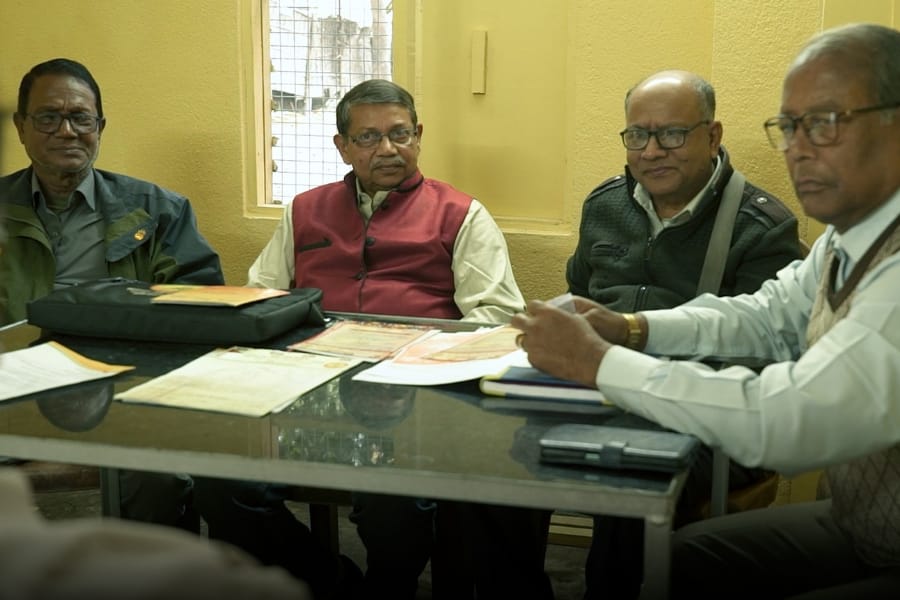 |
 |
A traditional water harvesting structure, still in use in parts of two adjoining districts of Kerala and Karnataka, is attracting international attention. Researchers from two UK universities will put their heads together from next month to study and analyse surangas, unique tunnel wells found in the Kasargod district of Kerala and the Dakshin Kannada district in Karnataka.
Unlike the vertical ones found in the rest of the country, these wells, called surangas, are dug horizontally. Many local people in these two districts use tunnel wells to draw water for domestic use. Some use them also for irrigation. They have a resemblance to ancient water structures used in Mesopotamia several millennia ago. In appearance, they are quite similar to qanats, which are still in use in rural parts of Iran.
However, the surangas that are still in use are of relatively recent origin. The oldest of them has probably been in use for less than a century. Who first introduced these cave-like structures from which water flows out due to gravity is still a mystery. The exact number of surangas that exist in these two districts is anybody’s guess. Experts who have studied them briefly estimate it to be around 5,000.
According to experts, what necessitated the innovation of surangas or tunnel wells is the geographical state of the region. Despite receiving bountiful rain, most parts of the region experience acute water shortages in the summer months. Underlying laterite rocks found in most parts make the digging of open wells, the main means of groundwater in Kerala, an arduous and expensive task. For instance, 75 per cent of Kasargod district is covered by such hard but porous rocks. Carving horizontally, however, helps tap a subterranean watercourse.
The distance to be traversed horizontally to obtain water from the acquifer is much less than the vertical distance in the case of an open well. A typical suranga is 30 to 40 metres long, but tunnel wells as long as 150 metres are also not uncommon. Normally, water from a suranga is collected in a pond before being used for irrigation or in the household.
Darren S. Crook of Hertfordshire University and Richard Jones of the University of Exeter, however, would not be the first set of experts to study these fascinating structures.
One of the first such studies was done some 20 years ago by a team of scientists from the Centre for Water Resources Development and Management (CWRDM) in Kozhikode, led by its then director, P. Basak. Subsequently, Kokkal Kamalakshan of the same institute painstakingly documented surangas in one of the three blocks of Kasargod district in 2002.
In 2010, experts led by Kulbhushan Balooni of the Indian Institute of Management, Kozhikode, in their paper published in Agricultural Water Management made a passionate plea to preserve this water harvesting tradition that is fast dying with the advent of bore wells and pumps.
“Little is known about the history, design and function of the suranga. This is knowledge that needs to be documented before local skills and techniques are lost,” says Crook.His Indian student Sudhir Tripathi came to know about tunnel wells a couple of years ago —while he was doing his masters in environmental management — from photographs uploaded on a photo-sharing site by Shree Padre, a water journalist from Kasargod.
According to Kamalakshan, who is currently joint director at the Kerala State Council for Science, Technology and Environment, one of the problems associated with the suranga is that there could be water wastage. As water flows out perennially by gravity, it is difficult to stop wastage. He says one of the tunnel wells that his team documented has a flow as high as 600 litres per minute.
According to Crook, the UK scientists would visit the region in October and November to map and date surangas across the Western Ghats. Besides cataloguing local knowledge and environmental history of surangas, they would analyse their design and technology and study economic, political and technological factors that influenced adoption of this unique water harvesting system over competing well technologies.
They also hope to evaluate the possibility of transferring suranga technology to other regions of the world, which are geographically and petrologically similar.










